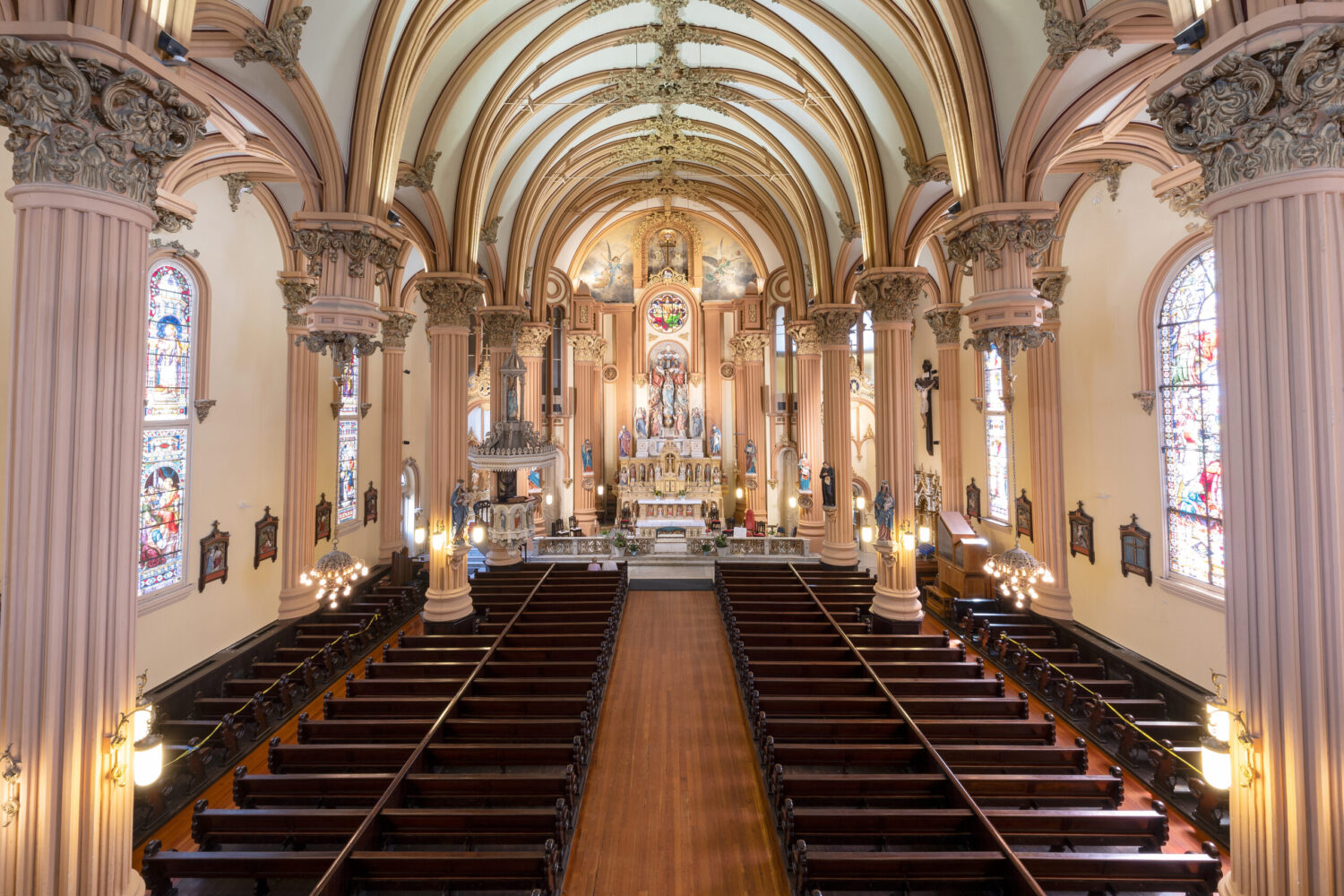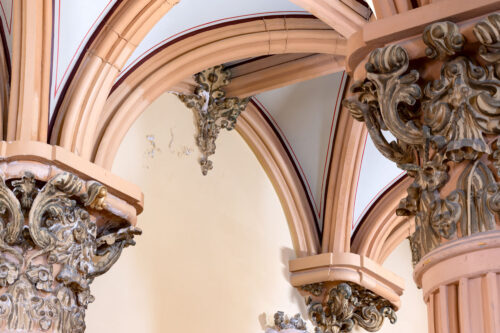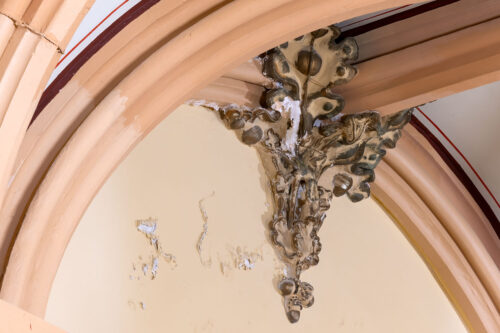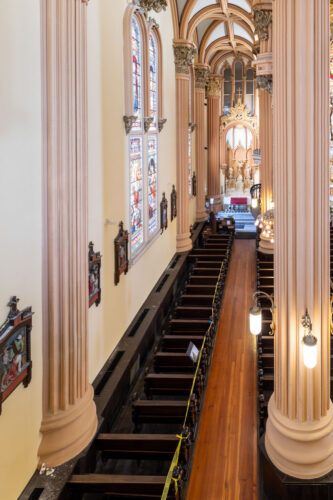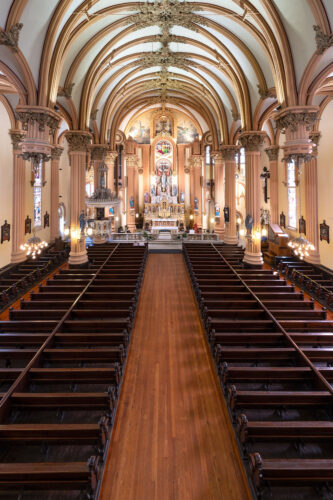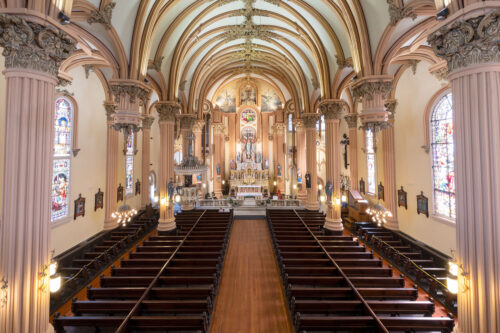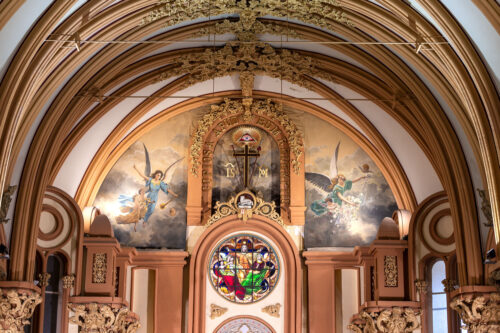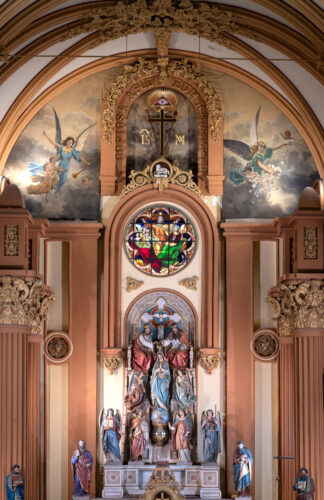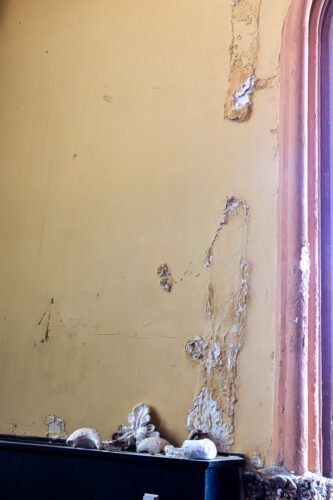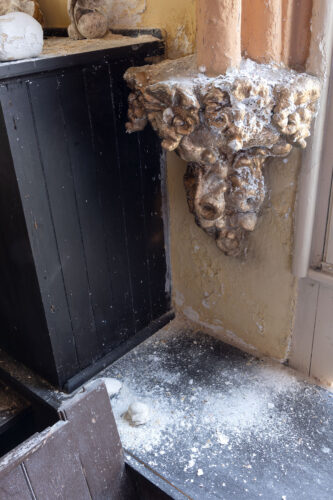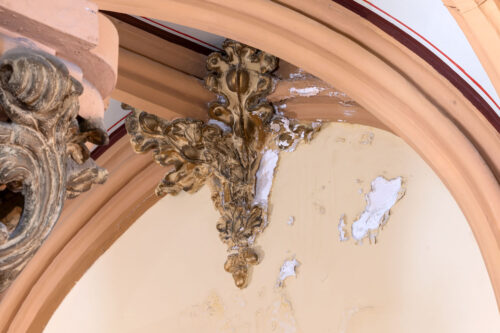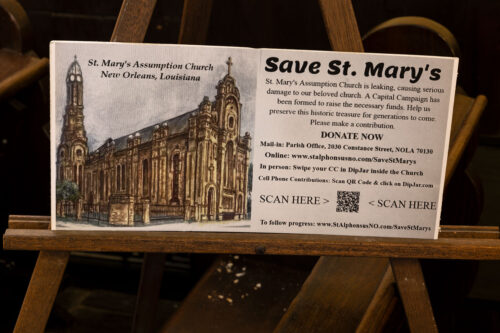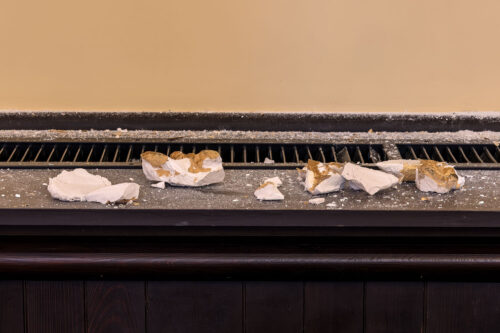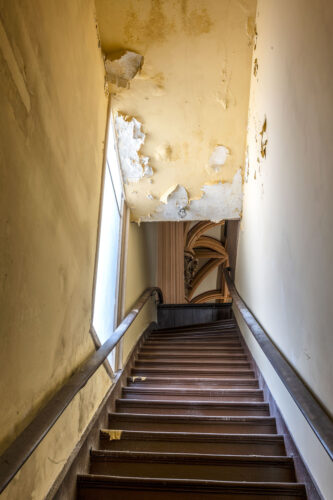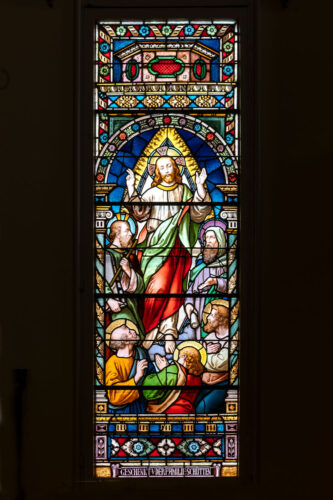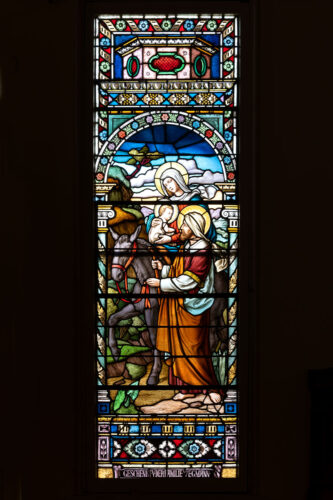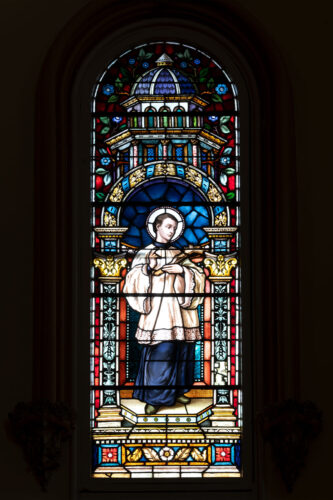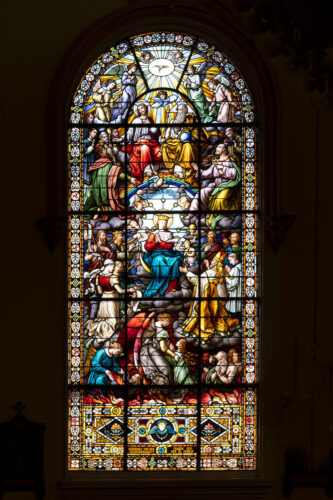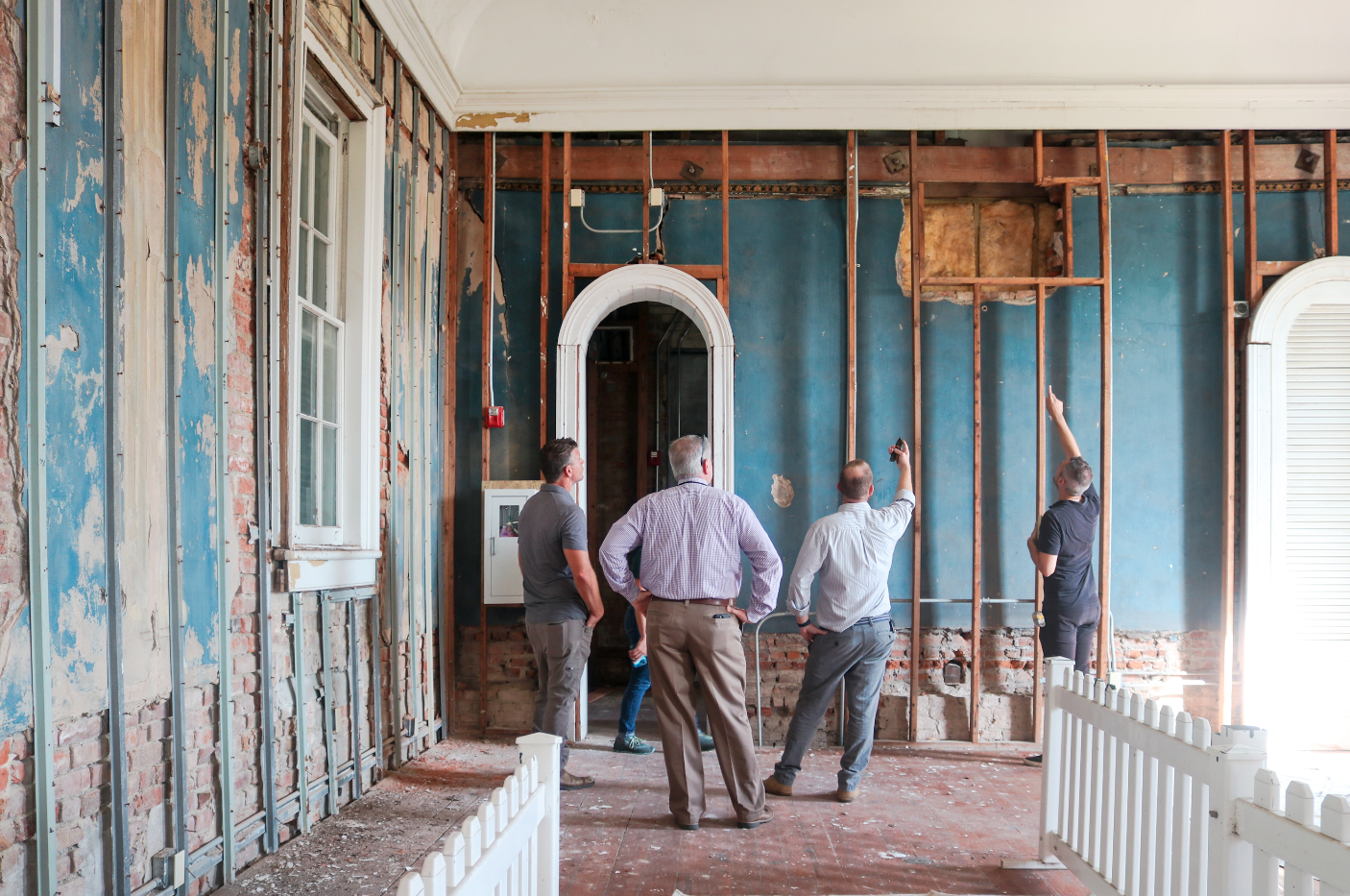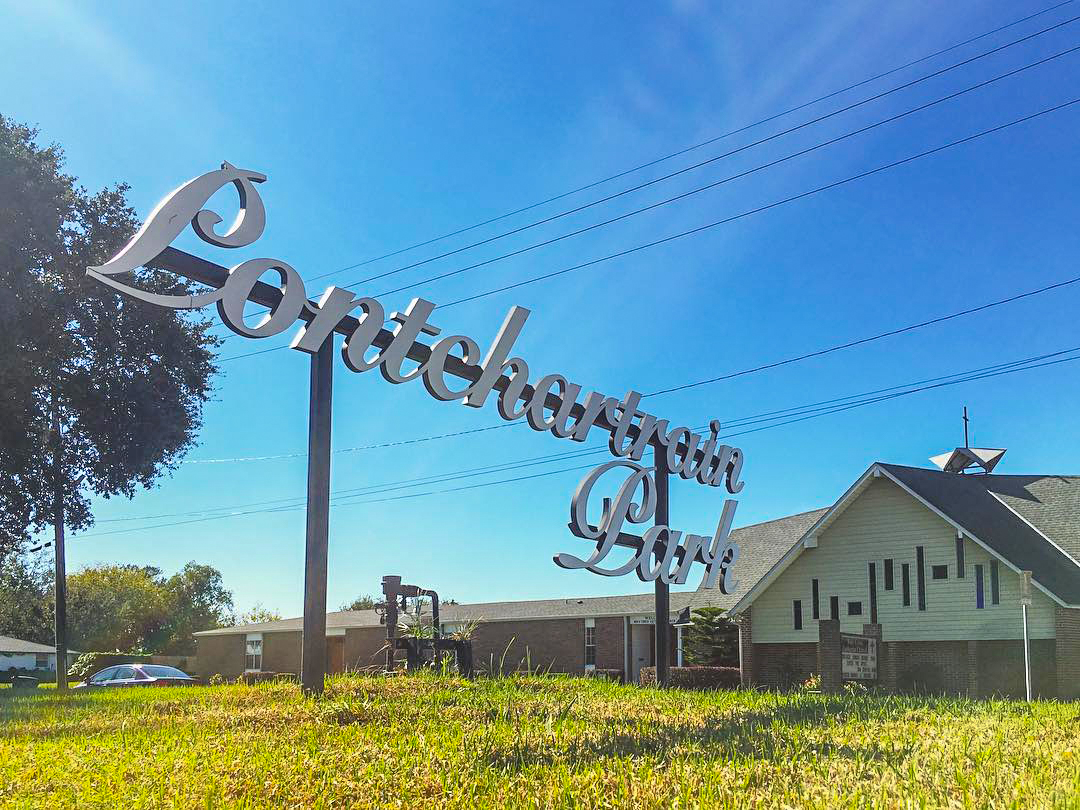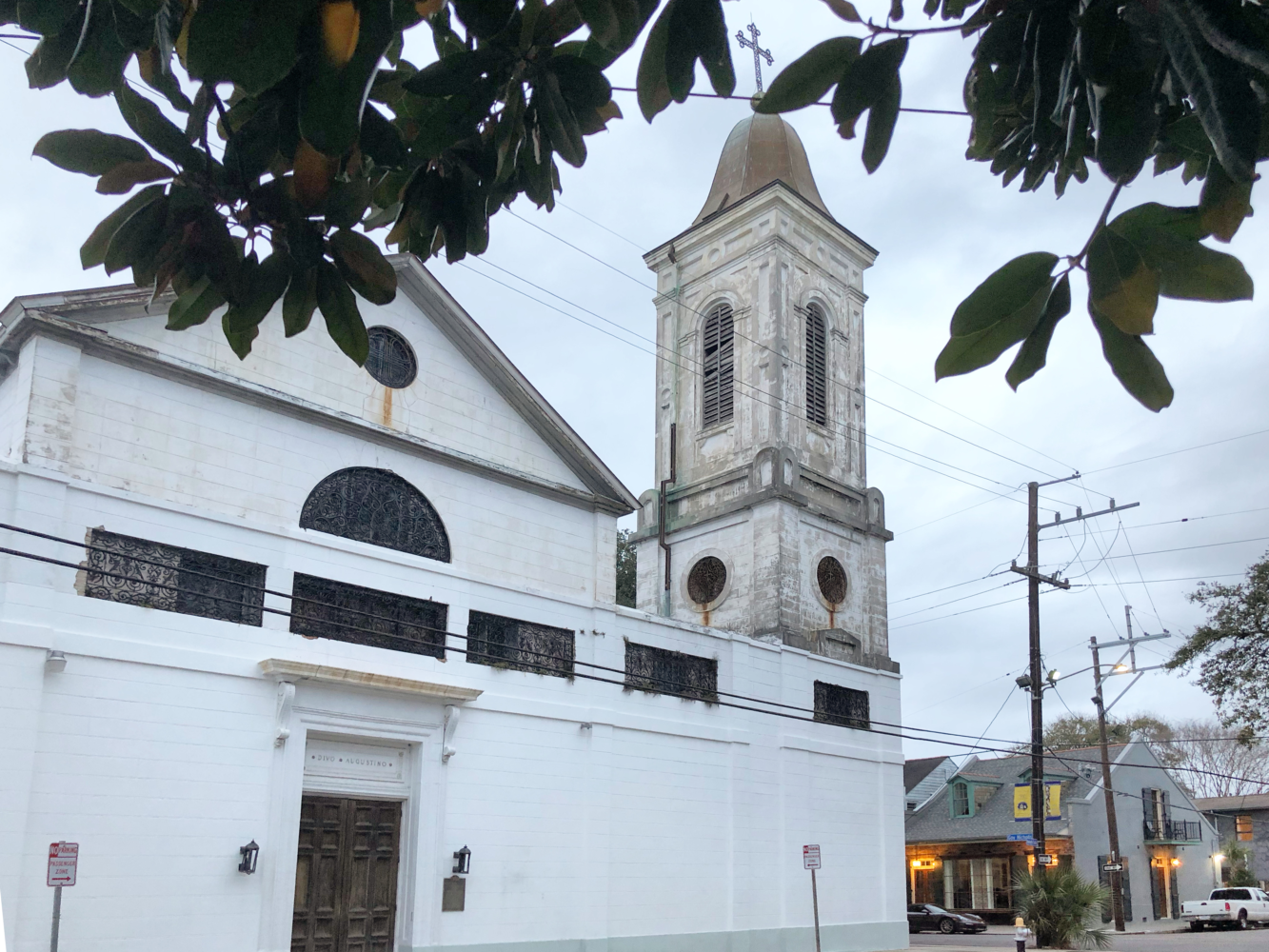This story appeared in the October/November issue of PRC’s Preservation in Print magazine. Interested in getting more preservation stories like this delivered to your door? Become a member of the PRC for a subscription!
At 164 years old, St. Mary’s Assumption Church at the corner of Josephine and Constance streets in the Irish Channel is recognized as a National Historic Landmark of considerable significance. Built in 1860 by the Redemptorists to serve the rapidly growing community of German Catholic immigrants then flooding into the city, the church is an excellent example of German Neo Baroque Architecture and a jewel in the crown of German contributions to New Orleans.
But the decades haven’t all been kind to St. Mary’s. Storms and a century-and-a-half of wear have damaged the interior and exterior of the historic structure. Root systems growing on the roof and walls and missing mortar have caused intrusive moisture. Leaks have destabilized external brickwork and damaged interior plaster, which is cracking and falling from the 60-foot ceiling. The church congregation has tried to mitigate the problems “on a crises-by-crises basis,” said architect Robert Cangelosi Jr. of Koch and Wilson Architects, who is overseeing the repairs. But “the entire masonry exterior must be addressed in a more comprehensive manner” if the church is to be preserved for future generations.
To ensure the continuation of its legacy, St. Mary’s is in need of a $4 million two-phase project of repairs; the first exterior phase to locate and stop water intrusion, the second interior phase to repair damage.
“This is an extraordinarily important building,” said Tatine Frater, who co-chairs the Capital Campaign Committee with former New Orleans City Council member Peggy Wilson. Frater applied for a much-needed grant from the National Fund for Sacred Places. “To be eligible for one of these grants, the building has to be architecturally, culturally, historically and spiritually significant. We check every one of those boxes.”
The façade of the massive brick structure features corbeling and molding with arches, crosses and niches; multiple stained-glass windows and an arched parapet with curved flourishes. The discovery of good-quality clay deposits in coastal areas north of Lake Pontchartrain made it possible to produce superior bricks that could be used for exterior surfaces and for decorative effect. A 142-foot octagonal bell tower, described by the late architect Sam Wilson, Jr. as “the most outstanding feature of the church,” rises above the roof.
Inside, the church is elaborately decorated with hand-carved wood statues and an altar made in Germany, ornate plaster work and brilliant stained-glass windows, including a Great Window. According to documents from the National Register of Historic Places, the richly decorated ceiling “is perhaps the finest expression of nineteenth century German Baroque art is America.”
“St. Mary’s is a priceless and unique example of the American expression of German Baroque art and architecture,” the National Register states. “The brickwork of its exterior, its unique foundations, and the plaster work, stained glass and wood carvings of its interior are unsurpassed in New Orleans and perhaps in the nation.”
“Architecturally and historically this structure is important in telling the diverse history of our city,” Cangelosi said. “It demonstrates the high level of craftsmanship in New Orleans during the mid-19th century.”
Through hurricanes and changing neighborhood demographics, the church has stood as a testament to cultural development in the area, the history of the Redemptorists in the city and the Irish Channel, and the challenges its residents have weathered through the years. In 1843, the Redemptorists settled in the area then known as Lafayette, a separate municipality later annexed as part of New Orleans. Lafayette included the working-class neighborhood near the river now known as the Irish Channel.
At one time, the footprint and outreach of the parish included orphanages, convents and schools, all concentrated in several blocks fittingly designated as “Ecclesiastical Square.” In the 1930s, the immediate area also became the site of the St. Thomas Housing Project, today replaced by the River Garden housing development. St. Mary’s Assumption is the spiritual home for about 400 families and about 220 active parishioners.
As the National Shrine of Blessed Francis Xavier Seelos, St. Mary’s Assumption also is a place of pilgrimage for many Catholics. A candidate for sainthood, Seelos ministered to members of the Irish Channel’s immigrant population who suffered from yellow fever before succumbing to the illness himself.
So far, The Save St. Mary’s 2022-2024 Capital Campaign has raised almost half of the necessary $4 million. The largest of these donations came from local businessman Louis J. Roussel III in honor of his wife, Sally. The remaining $2 million is being sought through personal outreach, potential grants, social media platforms and other means of spreading the word. Online fundraising can be accessed via Facebook, Instagram and GoFundMe. If approved, the funds from the National Fund for Sacred Places will provide $250,000 (with the requirement that it be matched two-to-one) along with training and support.
“As with any restoration project, the exterior envelope must be addressed first,” Cangelosi said.
The exterior work includes removing the bricks’ defective mortar and tuck pointing with a breathable soft mortar that allows water to escape to the exterior, then applying a breathable water repellant that meets stringent preservation standards. The exterior windows and doors of the church also will be painted.
After a drying period and moisture testing, the interior of the church will be addressed. Defective plaster will be removed and replaced with a soft plaster appropriate to the historic church. And once the plaster has cured, the church will be repainted its historic colors based on previously paint analyses.
According to Cangelosi’s outline, the plan does not address stained glass windows or the statues in the church. The artwork of the sanctuary was conserved after Hurricane Katrina, and the tower was restored in 2014. Reconstruction of a Simmons & Wilcox organ, installed when the church was constructed and the only major 19th-century pipe organ remaining in the city, will require an additional $500,000.
Parishioner and Capital Campaign Committee member Emile “Skip” Miller put together a lecture about the history of the church, presented at Deutsches Haus on Aug. 15. Miller said today’s parishioners represent a vastly different cross section of backgrounds and cultures from the church’s original German immigrant congregation, and support is needed from a wide swath of people.
“It’s one of the most important churches in the U.S.,” said Miller, who also finds St. Mary’s a reservoir of spirituality and peace. “When I go into the church and look around, I feel the presence of the Lord.”
St. Mary’s is part of St. Alphonsus Parish. “As years went by and a diverse population grew, three churches were built as part of the what would become known as St. Alphonsus Parish: a church for the Irish (St. Alphonsus Church), a church for the Germans (St. Mary’s Assumption Church) and a church for the French (Bon Secour). All three churches in one parish were and continue to be staffed by the Redemptorists,” according to the church parish’s website.
The Redemptorists believe strongly that St. Alphonsus has an important and viable future. “This parish is a legacy parish of the Redemptorists,” said the church’s pastor, Father Allan Weinert. “We are entrusted with a sacred place and that spurs us to do all we can to maintain the church in its original form.”
Click images to expand gallery. Photos by Charles E. Leche.



